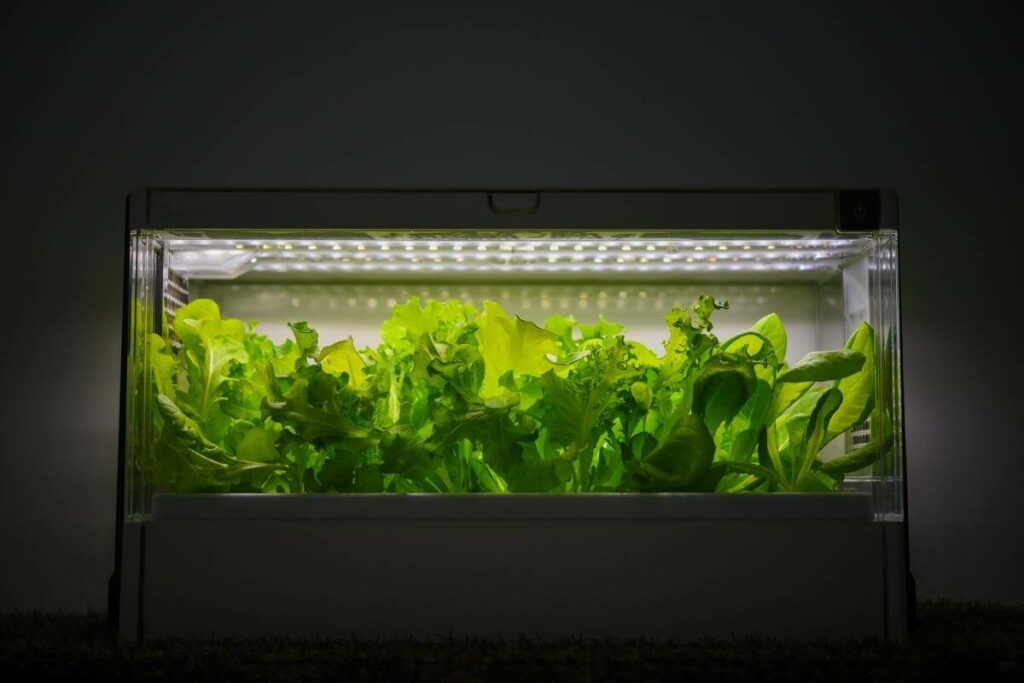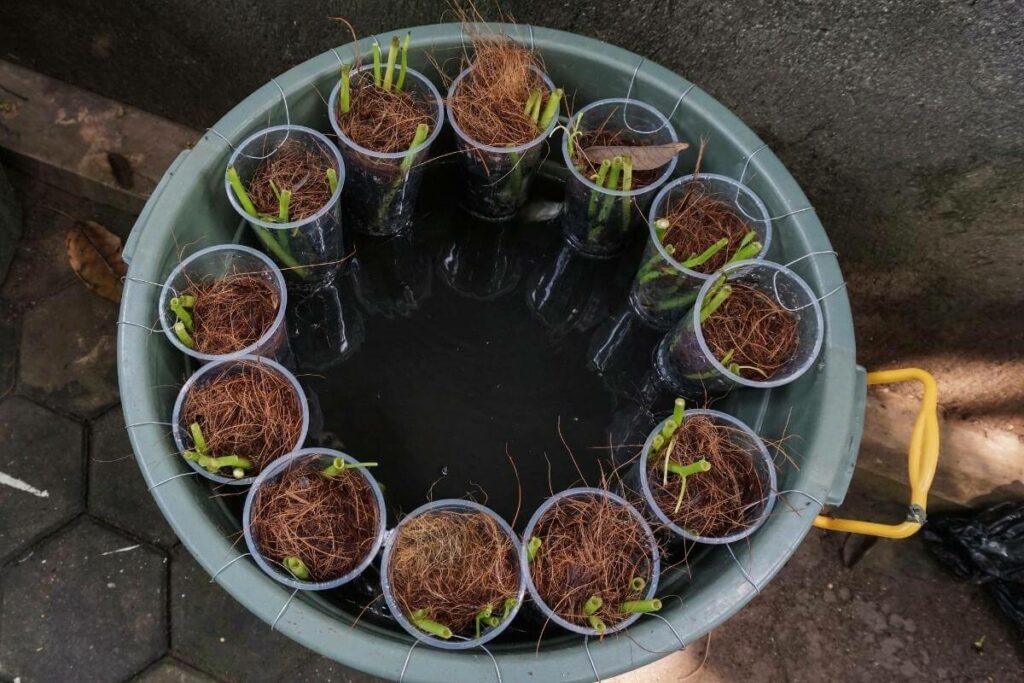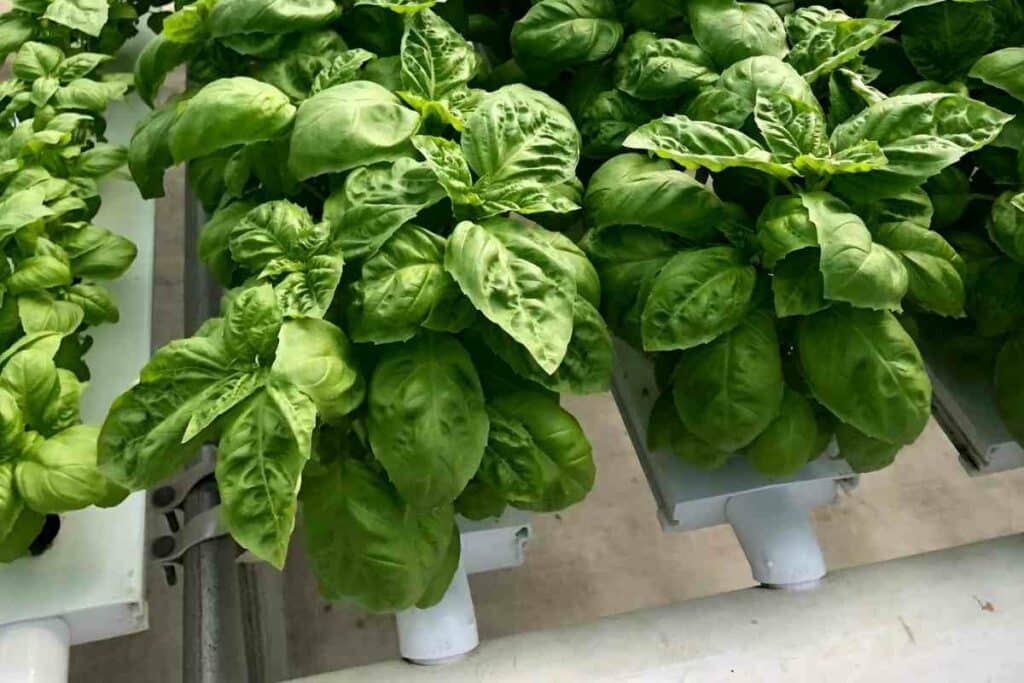The nutrient solution is the combination of irrigation water and the nutrients required for healthy, productive plants.
This is mainly used in hydroponic grow systems and other soilless growing techniques. In these cases, the nutrient solution is what provides nutrients to the plants.
How do you calculate hydroponics nutrients? There is a formula that you need to follow. The formula for solid nutrient solution is FR = 100 x NA/%N. The formula for liquid nutrient solution is: FR = NA/(%NxDx10).
These will be explained in more detail below.
When you look at those formulas, you may feel that calculating and balancing the nutrient solution is difficult.
However, in this article, we’ll provide the steps necessary to make sure that you don’t make any mistakes.
6 Steps for Calculating Hydroponics Nutrient Solution
There are six steps in the process of calculating and balancing the nutrient solution for your hydroponics system.
Those steps are listed and explained below.
Step 1 – Test Source Water
The very first thing you must do is test your source water.

Typically, source water already contains some nutrients, which must be taken into account.
After all, you don’t want to end up adding too much of something and harming your plants.
Results may be provided in a variety of units, such as:
- ppm
- mg/l
- meg/l
- mmol/l
In order to make the calculation easier, you’ll want to convert all values to ppm.
Step 2 – Determine Nutrient Requirements for Your Crop
Now, it’s time to figure out the nutrient requirements for your crop.
You can do your own research to find recommendations, or if you have experience in this area, simply use the knowledge you already have.
If the values are provided in units besides ppm or mg/l, take the time to convert them all to ppm.
Quick Tip: Keep in mind that 1 ppm is equal to 1 mg/l.
Step 3 – Calculate Nutrient Rates to be Added
Now that you know what you have and what you need, you can determine what needs to be added.
Simply take the nutrient requirement values and subtract the values obtained from the test results. This will help you figure out what should be added. You’ll need to do this for each nutrient.
For example, if the plant requires a magnesium level of 60 ppm and your source water contains 40 ppm, you’ll need to add 20 ppm with fertilizers.
This means that you need to add 20 milligrams of magnesium to 1 liter of solution. If you receive a negative result, it means there’s more nutrient in the source water than is required.
Therefore, you should not add any of that particular nutrient to the solution.
Step 4 – List Available Fertilizers

Take the list of nutrients that you need based on your calculations in the step above and find a fertilizer that contains those nutrients.
If a nutrient is not needed, don’t use it because it could cause undue harm to the plant, and, worst-case scenario, it could ruin the whole system, and you’ll have to start over.
Step 5 – Analyze Fertilizer Rates
When choosing a fertilizer, start with the one that contains a unique nutrient that the other ones do not.
For example, if the only source of calcium in fertilizer is calcium nitrate, start with this one.
For a solid fertilizer, the formula is FR = 100x NA/%N.
- FR is the fertilizer rate that needs to be applied as ppm or mg/l.
- NA is the nutrient concentration that needs to be added by the fertilizer in ppm.
- N is the dilution of that nutrient in the fertilizer.
For a liquid fertilizer, the formula is FR = NA/(%N x D x 10).
- D is the density of the fertilizer in kg/l.
- FR is the fertilizer rate in ml/l.
If the density is expressed as lbs/gallon, you’ll use this formula – FR = NA/(%N x D x 11.98).
- FR is the application rate expressed as gal/1000 gal.
Typically, the nutrients contained in fertilizer are provided as a percent, which means you’ll need to divide that by the density of the fertilizer.
Step 6 – Repeat Calculation for Each Nutrient
Now that you have the right formula, you’ll be able to find the right fertilizers that balance your requirements.
Some nutrients may require multiple sources, so you may want to prepare a cheat sheet so that you don’t have to repeat this process over and over.
It will essentially already be done for you.
Things to Keep in Mind

When calculating hydroponic nutrients, there are several things that you must keep in mind.
These are as follows:
- Nutrient concentration may be provided in the oxide form. Make sure that you are aware of the form you are using the calculation for and make conversions as required.
- There are two forms of nitrogen: nitrate and ammonium. In a nutrient solution for hydroponics, the ratio between these two is important. Some fertilizers contain one or the other. Some will contain both.
- Many times, the pH level of the solution will need to be lowered. This can be done by increasing the acidity. The three most common ways to do this are by adding nitric acid, sulfuric acid, and phosphoric acid.
However, keep in mind that nitric acid adds nitrogen, phosphoric acid adds phosphorous, and sulfuric acid adds sulfur.
You will need to take these into account when doing your calculations.
Conclusion
In order to ensure that you have healthy, productive plants in your hydroponic system, you must take the time to calculate the proper nutrient solution.
You don’t want to over or under feed your plants. If you do, you can cause harm to them.
While this process seems complicated at first, once you get the hang of it, you’ll find it goes fairly smoothly.





